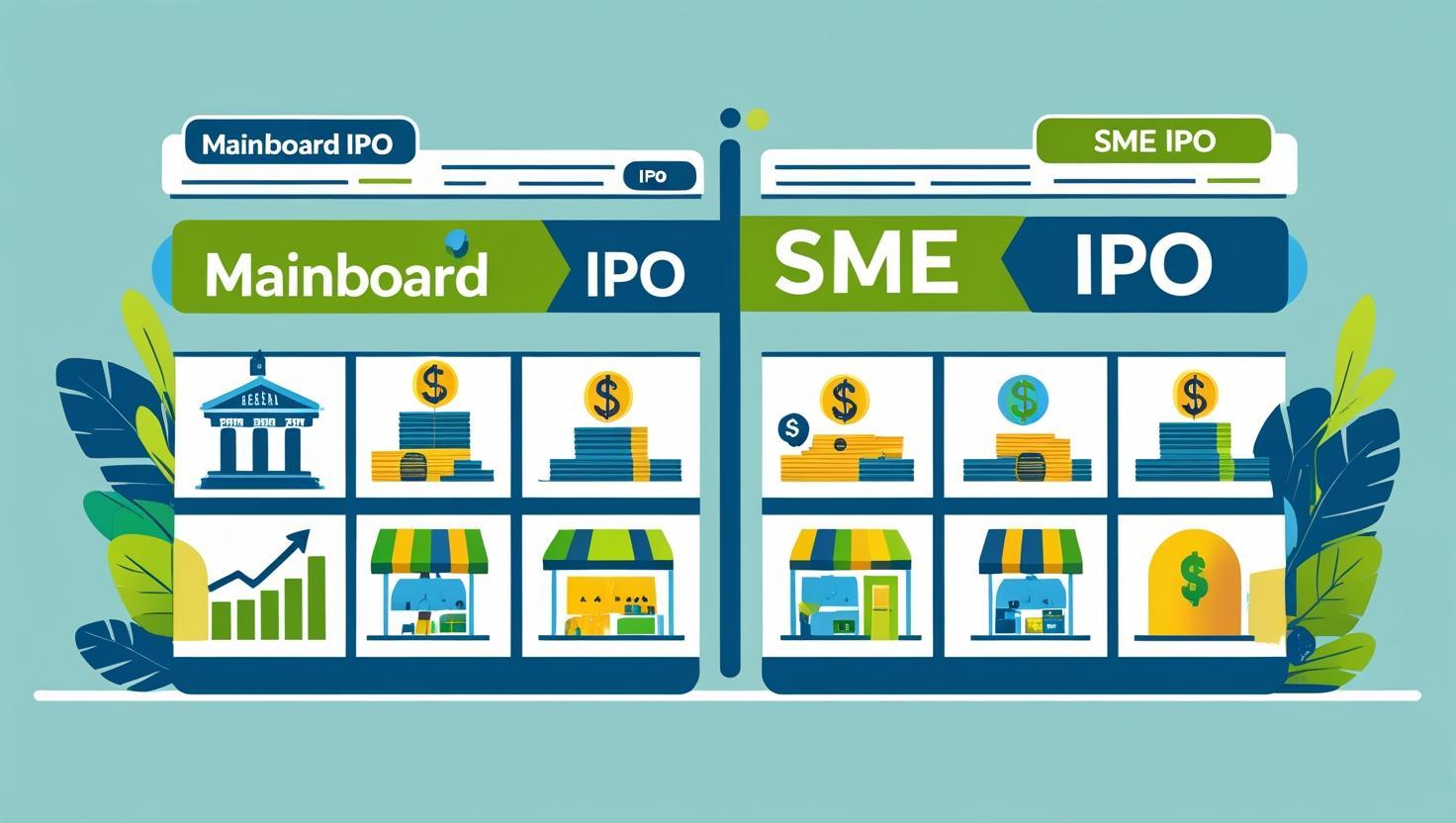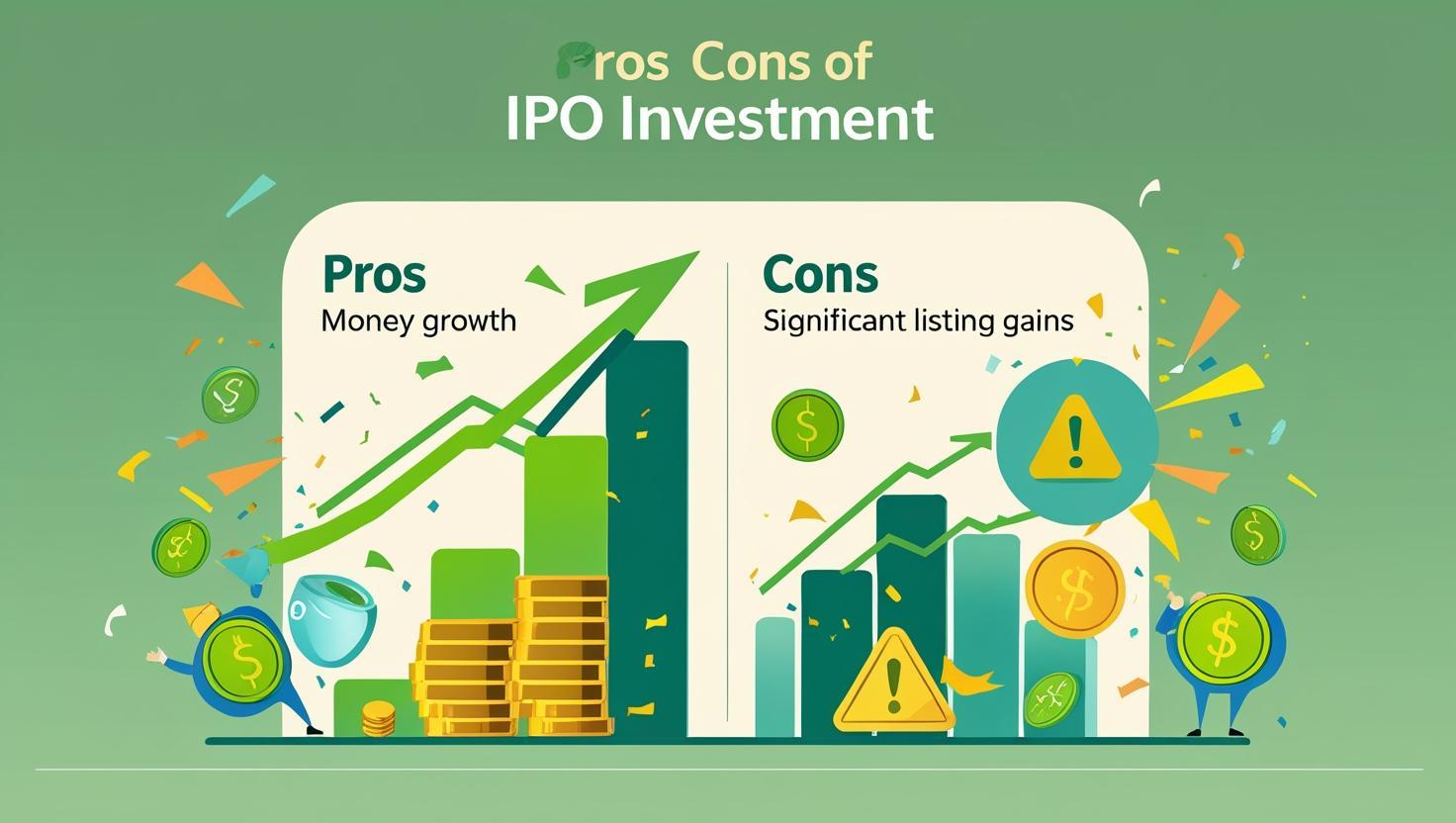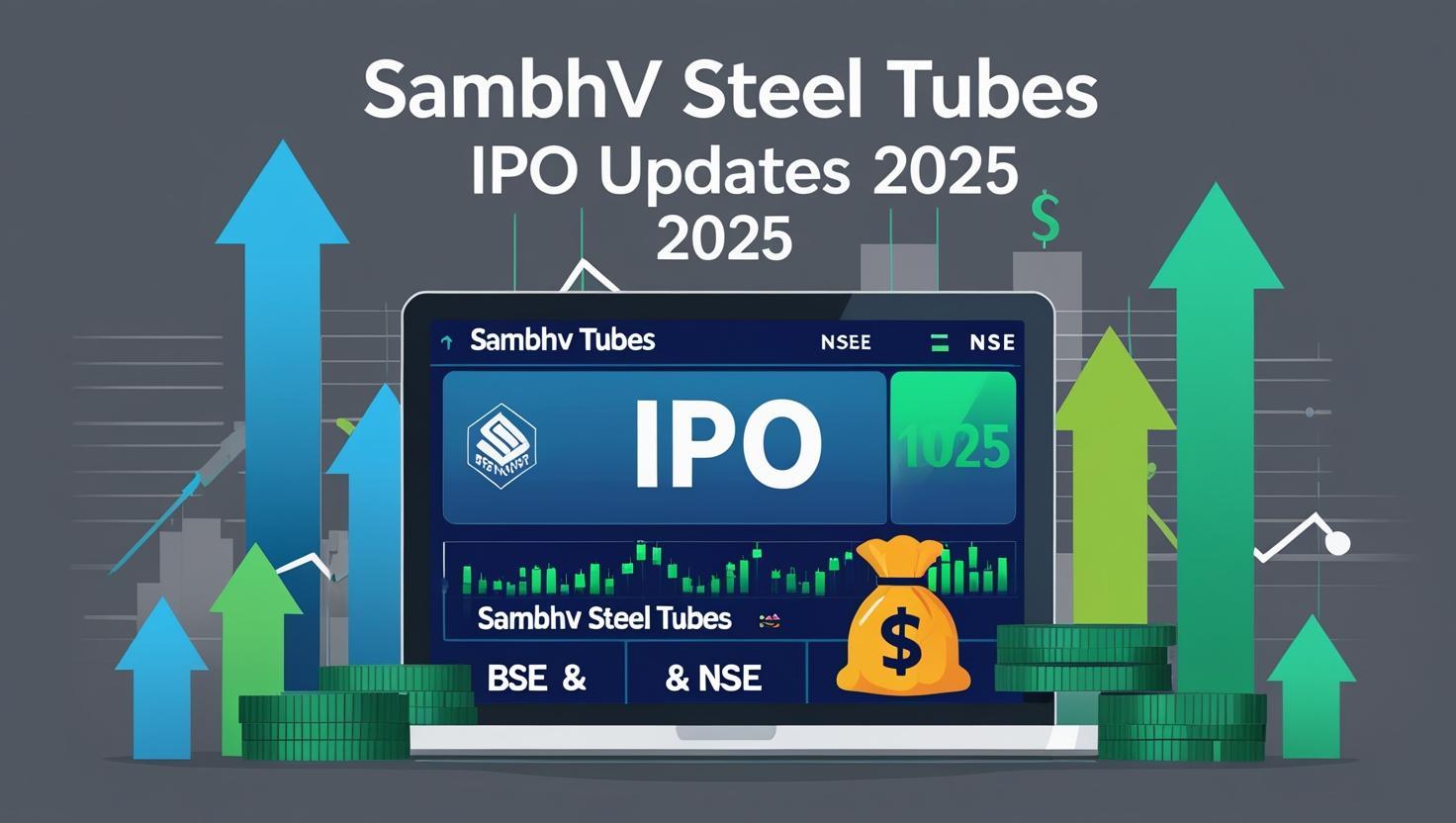Ipo 2025 mega guide: how to apply, risks & smart tips

Learn what is IPO, how to apply in India, allotment process, benefits, risks, taxation, and expert IPO tips for 2025 in this beginner-friendly guide 📈.
📈 IPO 2025 Mega Guide: What is IPO, How it Works & Why It Matters 📊
In the world of stock markets, one term that instantly grabs attention is IPO! Whether you’re a newbie investor or a market pro, you’ve probably heard people excitedly saying things like, “Did you apply for that IPO?” or “The GMP is skyrocketing!” 🚀
But what exactly is an IPO? How does it work? Is it worth your money? And what are the risks involved? In this detailed, beginner-friendly guide, we’ll uncover everything you need to know about IPOs in 2025 — explained in a super simple, no-jargon way.
📌 What is an IPO? 📑
IPO stands for Initial Public Offering.
It’s basically the process where a private company decides to go public by offering its shares to the general public for the very first time.
Imagine a startup that’s grown rapidly and now wants to expand its business, launch new projects, or pay off debts. Instead of taking a loan from a bank, it chooses to raise money from common people like you and me by selling a portion of its ownership — and this is done through an IPO 📊.
Once a company goes through an IPO, it gets listed on a stock exchange like NSE (National Stock Exchange) or BSE (Bombay Stock Exchange). After listing, anyone can buy or sell its shares in the open market.
💡 Why Do Companies Launch IPOs?
You might wonder, “Why would a company share its ownership with the public?”
Well, here are the main reasons:
-
📈 To raise capital for business expansion, product launches, or infrastructure upgrades.
-
💸 To pay off existing debts and strengthen the company’s financial position.
-
🏢 To improve brand visibility and public image.
-
🎯 To offer an exit route for early investors or venture capitalists who want to book profits.
-
📜 To comply with regulatory requirements in case of mandatory listing.
Once listed, the company gains better market credibility, attracts new investors, and benefits from a transparent public profile.
📊 How Does an IPO Work? (Step-by-Step Process)

Let’s simplify the entire IPO process for you:
1️⃣ Company files a DRHP (Draft Red Herring Prospectus) with SEBI (India’s stock market regulator), explaining everything about its business, finances, risks, and IPO plan.
2️⃣ SEBI reviews the application, suggests changes if needed, and once satisfied — approves it.
3️⃣ The company then files the final RHP (Red Herring Prospectus) with exact dates, price band, and lot size for the IPO.
4️⃣ The IPO opens for public subscription (usually for 3 working days). Investors can apply during this window via UPI or ASBA (Application Supported by Blocked Amount).
5️⃣ After the IPO closes, the allotment process begins. If oversubscribed, shares are allotted via a lottery system for retail investors.
6️⃣ Shares get credited to the investors’ demat accounts.
7️⃣ On listing day (usually T+6 working days after IPO closes), the shares start trading on NSE/BSE — and that's where you might witness listing gains 📈 or listing losses 📉.
📌 Mainboard IPO vs SME IPO — What’s the Difference? 🏢

Not every IPO is launched on the same platform. In India, there are two primary types of IPOs:
📌 Mainboard IPO
This is for large, well-established companies with an issue size typically above ₹50 crore. These IPOs are listed on major stock exchanges like NSE and BSE.
-
✔️ Can be applied via UPI or ASBA.
-
✔️ Lower minimum investment (as low as ₹14,000–₹15,000 in one lot).
-
✔️ Open to retail, HNI, and institutional investors.
Examples: LIC, Nykaa, Zomato.
📌 SME IPO
This is designed for Small and Medium Enterprises (SMEs) looking to raise capital. They list on platforms like NSE Emerge and BSE SME.
-
✔️ Higher minimum investment (₹1–2 lakh per lot).
-
✔️ Generally applied via ASBA (UPI isn’t supported in most cases).
-
✔️ Higher risk but higher potential returns if the company grows post-listing.
Examples: Droneacharya, Innokaiz India.
If you’re a beginner, it’s usually safer to start with Mainboard IPOs.
📋 Key IPO Terms You Should Know 📖
Before diving into IPO investing, get familiar with these basic terms:
-
Issue Price: The price at which shares are offered to investors during IPO.
-
Price Band: In book-building IPOs, companies offer a price range (e.g. ₹100–₹120 per share). You can bid within this band.
-
Lot Size: Minimum number of shares you need to buy in one go. Example: 1 lot = 15 shares.
-
Cut-off Price: Retail investors can select ‘cut-off’ while applying, agreeing to pay the final discovered price.
-
DRHP (Draft Red Herring Prospectus): A draft IPO document filed with SEBI.
-
RHP (Red Herring Prospectus): Final IPO document with confirmed issue dates and price band.
-
ASBA (Application Supported by Blocked Amount): A facility where your IPO application amount is blocked in your bank account till allotment, without being debited upfront.
-
GMP (Grey Market Premium): The unofficial premium at which IPO shares are traded before listing in the grey market.
📈 IPO Categories: Who Can Apply?
An IPO isn’t open to just anyone in any proportion. SEBI divides investors into specific categories:
-
Retail Individual Investors (RII): People like you and me, applying up to ₹2 lakh.
-
Non-Institutional Investors (NII/HNI): High net-worth individuals applying for more than ₹2 lakh.
-
Qualified Institutional Buyers (QIB): Large entities like mutual funds, insurance companies, pension funds.
Each category gets a separate quota of shares. Retail quota is generally 35% of the total IPO size.
📊 How to Apply for an IPO in India (2025 Guide) 📲
Now that you know what an IPO is, how it works, and the types of IPOs, let’s dive into the actual process of applying for one. Thanks to digital platforms, applying for IPOs in 2025 is smoother and quicker than ever — no paperwork, no brokers calling you up, just a few taps on your phone 📱✨.
Here’s a step-by-step guide on how you can apply for an IPO:
📋 Step 1️⃣: Open a Demat and Trading Account
First things first — you need a demat account to hold your allotted IPO shares and a trading account to sell them later on.
You can open these easily with any stockbroker like:
Most brokers now offer free demat accounts, and it hardly takes 10–15 minutes online ⏳.
📋 Step 2️⃣: Choose the IPO You Want to Apply For
Keep track of upcoming IPOs through your broker’s app, financial news websites, or NSE/BSE’s IPO section.
Check details like:
-
Company background
-
DRHP & RHP (available on SEBI or stock exchange sites)
-
Price band
-
Lot size
-
Grey Market Premium (optional)
Pro Tip: Don’t blindly follow hype. Read the company’s financials and business model 📊.
📋 Step 3️⃣: Apply via UPI or Net Banking (ASBA)

There are two popular ways to apply:
📱 UPI Application (Most Common)
-
Log into your broker’s app.
-
Go to IPO section.
-
Select the IPO, enter quantity in lots, choose cut-off price.
-
Enter your UPI ID (PhonePe, Google Pay, Paytm, etc.).
-
Approve the mandate request in your UPI app.
Done! Your application amount gets blocked in your bank account, not debited.
💻 ASBA via Net Banking (Alternative)
-
Log into your internet banking.
-
Find the IPO section.
-
Choose the IPO, enter bid details.
-
Submit and authorize the request.
Your funds will stay blocked till allotment. If you don’t get shares, the amount is unblocked without deduction.
📅 IPO Timings: When Can You Apply?
IPO subscriptions typically remain open for 3 working days.
Example:
Open Date: 10 July 2025
Close Date: 12 July 2025
Timing:
✔️ 10:00 AM to 5:00 PM on working days.
✔️ UPI mandates must be approved before 5:00 PM on the closing day.
Important: Don’t wait till the last day evening — UPI failures and server rush are common issues 😓.
📈 What Happens After IPO Application?
Many first-time investors wonder — “Okay, I applied. Now what?”
Here’s what happens after you submit your IPO application:
1️⃣ UPI Mandate Approval (for UPI applications)
Confirm the fund block request via your UPI app.
2️⃣ Subscription Monitoring
You can track how much the IPO is getting subscribed in real-time on NSE/BSE websites.
3️⃣ IPO Closes
At 5 PM on the final day.
4️⃣ Allotment Process
If the IPO is oversubscribed (which it usually is), allotment happens via a computerized lottery system.
5️⃣ Refund (If Not Allotted)
Blocked money gets unblocked within 2–3 working days.
6️⃣ Shares Credited
If allotted, IPO shares will reflect in your demat account before listing day.
💹 IPO Grey Market Premium (GMP) — What’s the Buzz?
You’ll often hear people saying, “Iska GMP ₹60 chal raha hai” 📢.
But what exactly is this GMP?
Grey Market Premium (GMP) is the price at which IPO shares are being traded unofficially before they get officially listed on the stock exchange.
Example:
If the IPO issue price is ₹200 and the GMP is ₹50, it means people are willing to pay ₹250 per share in the grey market.
Should You Rely on GMP?
Well — it’s an indicator of market sentiment but not a guaranteed listing price. The grey market isn’t regulated by SEBI and can be risky. Treat it like gossip — fun to hear, but don’t make investment decisions based solely on it 🎭.
📊 IPO Allotment Process: How Are Shares Distributed?
This is one of the most exciting and frustrating parts of IPO investing. Here’s how it works:
1️⃣ Company sets aside quotas for different investor categories:
-
35% for Retail
-
50% for QIB (Qualified Institutional Buyers)
-
15% for NII/HNI
2️⃣ If total applications are within available shares → everyone gets allotment.
3️⃣ If oversubscribed (which is usually the case):
-
Retail category allotment is done via a computerized lucky draw (lottery system).
-
Chances of allotment reduce if the IPO is highly oversubscribed.
Pro Tip: Apply via multiple family members’ accounts to increase your chances 👨👩👧👦.
🔍 How to Check IPO Allotment Status
Once the allotment date arrives (generally 4–5 working days after IPO closes), you can check your status here:
-
IPO registrar’s website (like Link Intime, KFintech)
-
NSE/BSE website IPO section
-
Broker apps (Zerodha, Groww, etc.)
You’ll need your:
-
PAN Number
-
IPO Application Number
-
Demat Account Number
If allotted, shares will be visible in your demat account by T+6 days 📲.
📈 Benefits of Investing in IPOs 🚀

Let’s be honest — one of the biggest reasons people rush to apply for IPOs is the hope of making quick money 📈. But IPOs offer more than just listing gains. Here’s why investors love IPOs:
✅ Opportunity to Enter Early
You get to buy shares at the issue price before the stock hits the secondary market. If the company does well, you can ride the entire growth journey from day one.
✅ Potential Listing Gains
If market sentiment is bullish and the IPO is oversubscribed, the stock may list at a premium over its issue price — giving you instant profits 💰.
✅ Long-Term Wealth Creation
Many IPO investors prefer to hold shares for the long haul. Good IPO stocks can multiply your investment over years.
✅ Easy, Paperless Process
In 2025, applying for IPOs is a fully digital, 5-minute job. No forms, no cheques, just UPI or net banking.
⚠️ Risks of IPO Investing 📉
No investment is risk-free — and IPOs are no exception. It’s important to know the risks before you invest.
❌ Listing Loss
If market sentiment weakens or the IPO is overpriced, it might list at a discount, causing immediate losses.
❌ Oversubscription = No Allotment
In hot IPOs, allotment chances for retail investors can be as low as 5–10%.
❌ Lock-in Period for Some Investors
Anchor investors (large funds) have a 30-day lock-in post-allotment. If many anchors sell after lock-in ends, stock price can drop 📉.
❌ Lack of Historical Data
Unlike listed companies, IPO firms don’t have market performance history, making future projections difficult.
📚 Important IPO Terms You Must Know (2025)
Let’s complete your IPO glossary 📖:
📌 DRHP vs RHP
-
DRHP (Draft Red Herring Prospectus): A draft document filed with SEBI containing company details, financials, and risks.
-
RHP (Red Herring Prospectus): Final, updated document with IPO dates, price band, and issue size.
📌 Anchor Investors
Large institutional investors (mutual funds, insurance companies) who get to invest before the IPO opens for the public. Their participation boosts confidence 📊.
📌 Price Discovery in Book Building
In book-building IPOs, the final issue price is decided based on the demand at different bid prices within the price band.
📌 Lock-in Period
Certain investors (like promoters and anchors) can’t sell their shares for a fixed time after IPO listing.
📌 ASBA
Your IPO application amount is blocked in your bank account until allotment — it doesn’t get debited unless shares are allotted.
📌 T+2 Listing
“T” is the day IPO closes. Shares get listed and start trading typically 6 working days after T, and if allotted, appear in your demat account 1 day before listing.
💸 How Are IPO Gains Taxed in India?
People often forget — IPO profits are taxable.
-
If you sell allotted shares within 1 year, it’s Short-Term Capital Gain (STCG) taxed at 15%.
-
If held for more than 1 year, it’s Long-Term Capital Gain (LTCG) taxed at 10% on gains above ₹1 lakh.
💡 Tip: Listing day gains are taxable only when you sell.
📈 Historical Success & Failure IPO Stories
A little IPO trivia 👇:
-
Infosys IPO (1993): Issued at ₹95, now over ₹1,500 after multiple bonuses.
-
Reliance Power (2008): Issued at ₹450, listed at ₹430, and crashed to ₹150 within months.
-
Zomato (2021): Issued at ₹76, listed at ₹116 (50% gain).
Moral? Every IPO is a gamble — some multibaggers, some disasters 🎲.
📊 Pros & Cons of IPO Investing
Let’s summarize everything neatly 👌:
| ✅ Pros | ❌ Cons |
|---|---|
| Early entry opportunity | No guarantee of listing gains |
| Potential for instant profits | Oversubscription limits allotment |
| Long-term wealth potential | Price volatility post-listing |
| Fully digital application | Risk of listing loss |
| Transparent regulatory process | Limited historical data |
❌ IPO Myths You Should Avoid
Time to bust some market myths:
Myth: Every IPO makes money
Fact: Many IPOs have listed below issue price.
Myth: Higher GMP = Higher listing price
Fact: GMP is unofficial and unreliable.
Myth: Applying for multiple lots improves allotment chance
Fact: Allotment is lottery-based per application, not quantity.
📢 Final Takeaway: Should You Invest in IPOs?
IPOs are exciting, accessible, and potentially rewarding. But like all investments, they carry risk. The secret to IPO success is:
✔️ Research the company
✔️ Understand the risks
✔️ Don’t get blinded by hype
✔️ Invest what you can afford to lose
If done wisely, IPOs can be a fun and profitable addition to your investment portfolio 📈✨.
📚 Frequently Asked Questions (FAQs) About IPOs

📌 1️⃣ What is the full form of IPO?
IPO stands for Initial Public Offering. It’s the process through which a private company offers its shares to the general public for the first time to raise capital and get listed on the stock exchange 📊.
📌 2️⃣ How many types of IPOs are there in India?
There are mainly two types of IPOs in India:
-
Mainboard IPO: For large, well-established companies listing on NSE or BSE.
-
SME IPO: For small and medium enterprises listing on NSE Emerge or BSE SME platform.
Both have different minimum investment amounts, risk levels, and application methods 📈.
📌 3️⃣ How can I apply for an IPO in India?
You can apply for an IPO in India via:
-
UPI through broker apps like Zerodha, Groww, Upstox.
-
ASBA (Application Supported by Blocked Amount) via net banking.
Choose the IPO you like, enter your bid details, approve the payment block, and wait for allotment confirmation 📲.
📌 4️⃣ What is a cut-off price in an IPO?
The cut-off price is the final issue price decided after all investor bids are collected within the price band.
Retail investors can select the ‘cut-off’ option while applying, which means they agree to pay whatever final price is decided after the bidding process ends ✅.
📌 5️⃣ What is GMP (Grey Market Premium)?
GMP is the premium at which IPO shares are traded unofficially before listing.
Example: If an IPO’s issue price is ₹200 and the GMP is ₹60, it suggests a possible listing at ₹260.
However, GMP is unofficial and speculative — it’s just a market sentiment indicator and not a guarantee 🎭.
📌 6️⃣ Is IPO investment safe for beginners?
IPO investment is relatively safer than high-risk trading but still involves risks like listing losses, volatility, or poor long-term performance.
Beginners should:
-
Do thorough research
-
Avoid IPO FOMO
-
Invest within limits
and preferably start with Mainboard IPOs 💡.
📌 7️⃣ Can I apply for multiple IPO applications from one demat account?
You can apply for only one application per PAN number.
However, you can improve your allotment chances by applying from multiple family members’ demat accounts with different PAN numbers 👨👩👧👦.
📌 8️⃣ How are IPO shares allotted when it’s oversubscribed?
If an IPO is oversubscribed:
-
Retail allotment is done via a computerized lottery system.
-
Each application (not lot size) gets an equal chance.
-
If demand is very high, chances of allotment get lower 📉.
📌 9️⃣ What is an anchor investor in an IPO?
Anchor investors are large, institutional buyers like mutual funds and insurance companies who invest before the IPO opens for the public.
Their investment boosts market confidence. They have a 30-day lock-in period post-allotment, meaning they can’t sell their shares immediately 📊.
📌 🔟 Are IPO listing gains taxable in India?
Yes — any profits you make from IPO shares are taxable:
-
Within 1 year: 15% Short-Term Capital Gains (STCG)
-
After 1 year: 10% Long-Term Capital Gains (LTCG) on profits above ₹1 lakh.
Keep this in mind when booking listing gains 💸.
📢 Conclusion: Should You Invest in IPOs in 2025?
IPO investing is one of the most exciting parts of the stock market world. The thrill of applying, waiting for allotment, tracking GMP, and seeing the listing day performance is unmatched 🚀.
While IPOs can offer great listing gains and long-term wealth opportunities, they’re not risk-free. Listing losses, allotment disappointments, and price volatility are real.
The smart way to approach IPOs:
✔️ Invest in businesses you understand
✔️ Study the company’s DRHP & RHP
✔️ Avoid hype-driven applications
✔️ Use proper risk management
If done wisely, IPOs can become a fun, profitable, and educational part of your investment journey 📊✨.
⚠️ Disclaimer
This article is for educational and informational purposes only. Investing in IPOs and stock markets involves risks, including potential loss of capital.
Readers are advised to do their own research, consult certified financial advisors, and review company prospectuses before making any investment decisions.
The author and publisher are not responsible for any losses or profits arising from investments based on this article’s information 📜.






